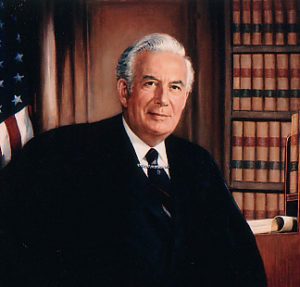
The answer is not found in recent FAA rulings or the growing number of state laws regulating drone use. The answer dates back 30 years this month to a little known court ruling.
On May 19, 1986, the U.S. Supreme Court ruled in California v. Ciraolo that police use of surveillance aircraft – unmanned or otherwise – can be used to obtain and execute a search warrant.
Thomson Reuters blogger Jeremy Byellin explains in a recent post:
“Ciraolo begins with an anonymous tip received by the Santa Clara police that Dante Ciraolo was growing marijuana in his backyard, which was shielded from outside view at the ground level by two fences. Officers trained in marijuana detection then flew over Ciraolo’s house in a private plane at an altitude of 1,000 feet. The officers identified marijuana plants growing in Ciraolo’s backyard from this distance, and took photographs of as much. The police obtained a search warrant using this information.”
Ciraolo attempted to throw out the evidence obtained via the warrant and, after bouncing back and forth between lower courts, the case landed before SCOTUS.
Writing the majority opinion, Chief Justice Warren Burger explained that the weed farmer had “no reasonable expectation of privacy from all observations of his backyard since [a]ny member of the public flying in this airspace who cared to glance down could have seen everything that the officers observed.”
Writing for DRONELIFE in 2014, Greg Galizio points out that — bolstered by subsequent court decisions — “if police comply with FAA regulations, any and all naked-eye observations from the air do not require a warrant.”
Galizio adds that “if privacy rights are to be protected in the 21st century, the Court must distinguish aerial, “naked-eye” observations from the operation of a police drone upon a private residence.
What that means for police drone operators is that a 1980s court decision makes it OK to surveil someone’s property and investigate based on what they observe. The more things change, the more they remain the same.
Jason is a longstanding contributor to DroneLife with an avid interest in all things tech. He focuses on anti-drone technologies and the public safety sector; police, fire, and search and rescue.
Beginning his career as a journalist in 1996, Jason has since written and edited thousands of engaging news articles, blog posts, press releases and online content.
Email Jason
TWITTER:@JasonPReagan
Subscribe to DroneLife here.